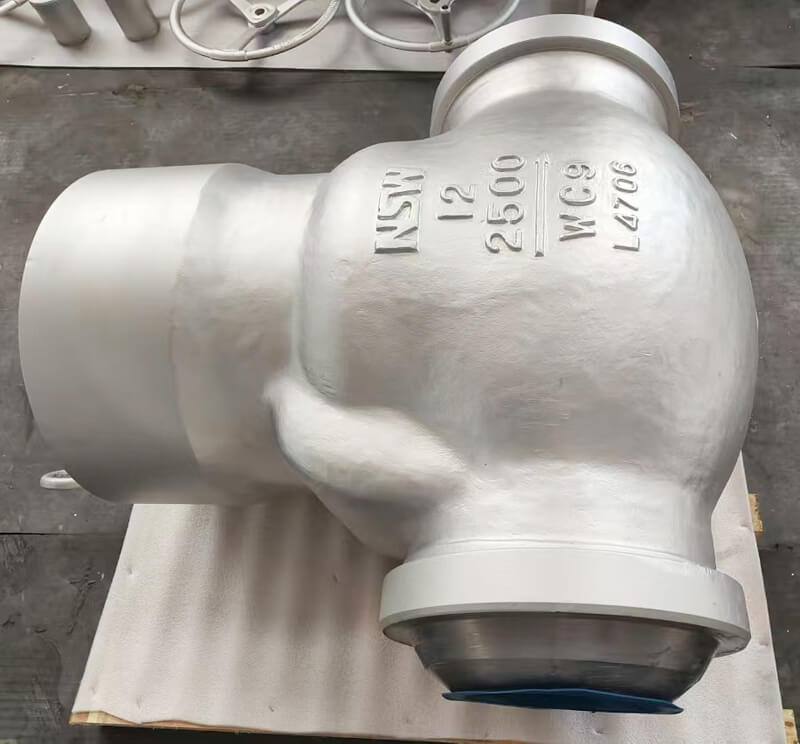What is an API 600 Gate Valve
The API 600 standard (American Petroleum Institute) governs bolted bonnet steel gate valves with flanged or butt-welding ends. This specification covers design, manufacturing, and testing requirements for API 600 Gate Valves used in oil, gas, and petrochemical industries.
Key Requirements of API 600 Standard:
- Design: Mandates wedge-type single gate structures (rigid/elastic)
- Materials: Specialized steel alloys for high-pressure/temperature service
- Testing: Rigorous shell tests and seat leakage tests
- Scope: Exclusively for steel gate valves with bolted bonnets
What are API 6D Valves
The API 6D standard (Pipeline Valves) regulates multiple valve types for pipeline systems, including API 6D Gate Valves, API 6D Ball Valves, API 6D Check Valves, and API 6D Plug Valves.
Key Requirements of API 6D Standard:
- Valve Types: Full-bore pipeline valves (gate, ball, check, plug)
- Materials: Corrosion-resistant alloys for sour service (e.g., H₂S environments)
- Testing: Extended duration seat tests + fugitive emissions testing
- Design Focus: Piggability, buried service, and emergency shut-off capability
Key Differences: API 600 vs API 6D Valves
| Feature | API 600 Valve | API 6D Valve |
|---|---|---|
| Covered Valve Types | Steel Gate Valves only | Gate, Ball, Check, and Plug Valves |
| Gate Valve Design | Wedge-type single gate (rigid/elastic) | Parallel/expanding gate (slab or through-conduit) |
| Ball Valve Standards | Not covered | API 6D Ball Valves (floating/fixed ball designs) |
| Check Valve Standards | Not covered | API 6D Check Valves (swing, lift, or dual-plate) |
| Plug Valve Standards | Not covered | API 6D Plug Valves (lubricated/non-lubricated) |
| Primary Application | Refinery process piping | Transmission pipelines (including piggable systems) |
| Sealing Focus | Wedge-to-seat compression | Double-block-and-bleed (DBB) requirements |
When to Choose API 600 vs API 6D Valves
API 600 Gate Valve Applications
- Refinery process shutdown systems
- High-temperature steam service
- General plant piping (non-piggable)
- Applications requiring wedge-gate sealing
API 6D Valve Applications
- API 6D Gate Valves: Pipeline isolation & pigging
- API 6D Ball Valves: Quick-shutoff in transmission lines
- API 6D Check Valves: Pump protection in pipelines
- API 6D Plug Valves: Bi-directional flow control

Certification Differences
- API 600: Gate valve manufacturing certification
- API 6D: Comprehensive quality system certification (requires API Monogram)
Conclusion: Key Distinctions
API 600 Gate Valves specialize in refinery-grade wedge-gate designs, while API 6D Valves cover multiple valve types engineered for pipeline integrity. Critical differences include:
- API 600 is gate-valve exclusive; API 6D covers 4 valve types
- API 6D has stricter material/traceability requirements
- Pipeline applications require API 6D; process plants use API 600
FAQ Section
Q: Can API 6D replace API 600 for gate valves?
A: Only in pipeline applications. API 600 remains the refinery standard for wedge-gate valves.
Q: Are API 6D Ball Valves suitable for sour gas?
A: Yes, API 6D specifies NACE MR0175 materials for H₂S service.
Q: Do API 600 valves allow double-block-and-bleed?
A: No, DBB functionality requires API 6D compliant valves.
Post time: May-30-2025






